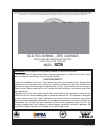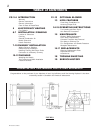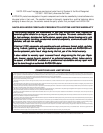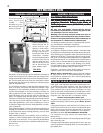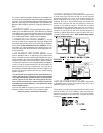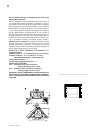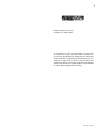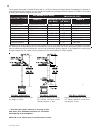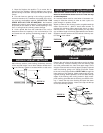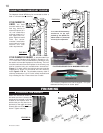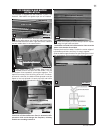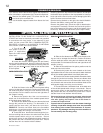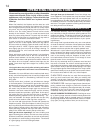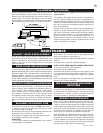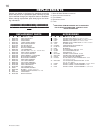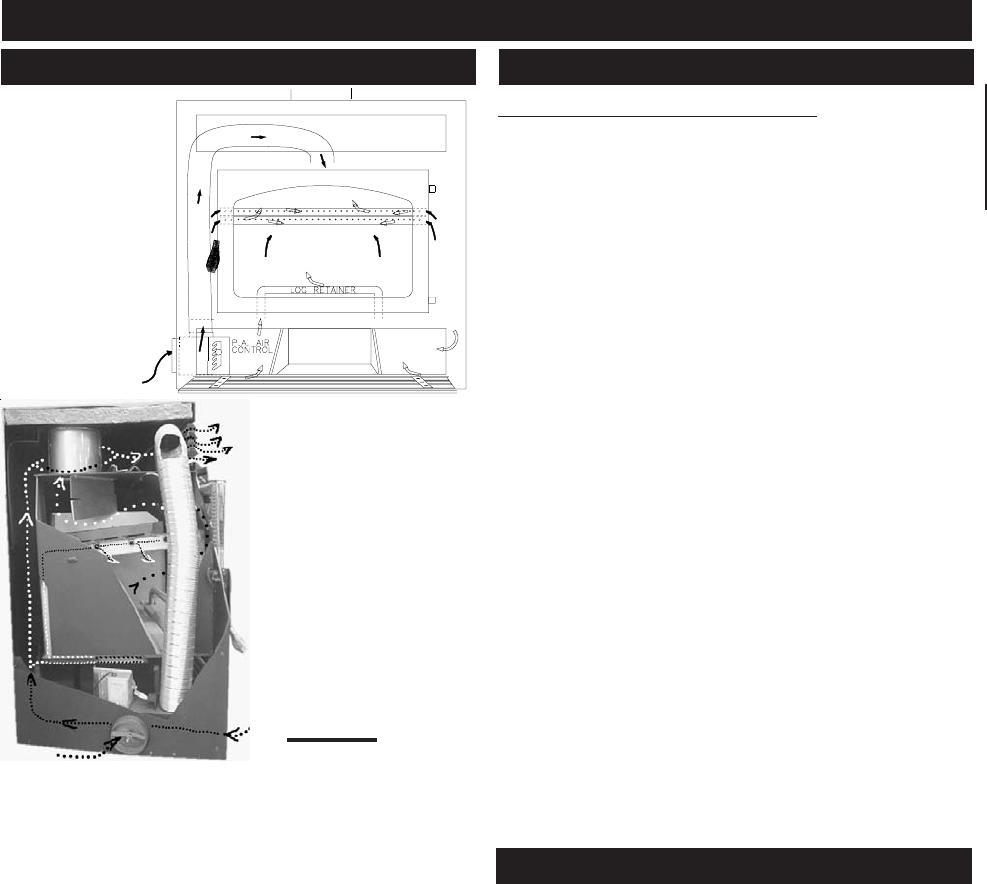
W415-0156 / A / 04.09.03
4
CALIFORNIA PROP 65 WARNING:CALIFORNIA PROP 65 WARNING:
CALIFORNIA PROP 65 WARNING:CALIFORNIA PROP 65 WARNING:
CALIFORNIA PROP 65 WARNING:
Use of this product may produce smoke whichUse of this product may produce smoke which
Use of this product may produce smoke whichUse of this product may produce smoke which
Use of this product may produce smoke which
contains chemicals known to the State ofcontains chemicals known to the State of
contains chemicals known to the State ofcontains chemicals known to the State of
contains chemicals known to the State of
CalifCalif
CalifCalif
Calif
ornia to cause cancerornia to cause cancer
ornia to cause cancerornia to cause cancer
ornia to cause cancer
, bir, bir
, bir, bir
, bir
th defth def
th defth def
th def
ectsects
ectsects
ects
, or other, or other
, or other, or other
, or other
reproductive harm.reproductive harm.
reproductive harm.reproductive harm.
reproductive harm.
Do not use makeshift compromises during
installation. Do not block or restrict air, grille or lou-
vre openings! Do not add a hood.
Burning your unit with the ash dump door open or
ajar creates a fire hazard that may result in discol-
oration to the gold plated door, internal damage to
the fireplace or a house and/or chimney fire.
All venting connections must be in compliance with the chim-
ney manufacturers installation instructions.
Clearances referred to throughout this manual are the mini-
mum requirements.
Your Napoleon fireplace must be installed in accordance with
all national and local building code standards and the stand-
ard of Chimney and Fireplaces, Vents and Solid Fuel Burning
Appliances NFPA #211. Consult the authority having jurisdic-
tion (such as municipal building department, fire department,
fire prevention bureau, etc.) to determine the need to obtain a
permit. If you are in doubt about the proper installation for your
situation, contact your dealer or local building or fire official.
The manufacturer does not guarantee that this fireplace and
its options will completely heat your entire home.
Expansion / contraction noises during heating up and cool-
ing down cycles are normal and to be expected.
Mobile home installation requires that the fireplace
be secured to the floor. It is recommended that in all cases,
the fireplace be secured to the floor. Use the pallet packing
brackets to accomplish this.
If the glass is not kept clean permanent discolouration and /
or blemishes may result. Normally a hot fire will clean the
glass. The most common reasons for dirty glass include: not
using sufficient fuel to get the stove thoroughly hot, using
green or wet wood, closing the draft so far that there is insuf-
ficient air for complete combustion. If it is necessary to clean
the glass, use a soft cloth with a non-abrasive cleaner.
Do not clean the glass when hot!
The glass is very strong but do not let burning fuel rest or fall
against it and always close the door gently. Never force it
shut!
If the glass should ever crack while the fire is burning, do not
open the door until the fire is out and do not operate the stove
again until the glass has been replaced with a new 5mm
thick piece of ceramic glass, available from your Napoleon /
Wolf Steel Ltd. dealer. Do not substitute materials.
For information on glass removal and replacement, see
Maintenance.
Do not use abrasive cleaners to clean plated parts. Buff lightly
with a clean dry cloth.
Prolonged high temperature burning with the door ajar may
cause a permanent rainbowing effect on the lower edge of a
gold plated door.
This is the most effi-
cient, simple and
trouble free
woodburning sys-
tem we know of and
works as follows:
Primary combustion air
enters through the air
control inlet box regu-
lated by a draft control,
travels up the side
through a duct and en-
ters the top center of the
combustion chamber
into a preheating airwash
located across the top
and then down the win-
dow to feed the fire and
also to ensure that the
glass remains clean.
Secondary air feeds directly into the combustion chamber at
hearth level through the log retainer and also through inlets
located at the bottom back corners of the combustion cham-
ber. This air travels up the riser to the four secondary air tubes
located at the top and shoots out laterally to oxidize the gases
rising to the smoke exit.
The combustion chamber is lined with high-temperature fire-
brick on all sides, and across the bottom to maintain a high
temperature in the combustion chamber so that gases mix-
ing with the preheated air from the secondary air tubes are
easily ignited and burned. Indeed, it is fascinating to watch
flames flickering much of the time from the secondary air
tubes. The fireplace sides and back permit a zero clearance
installation and direct the heat upwards and forwards into the
room. Be sure to provide sufficient combustion air. There are
many other appliances in your home competing for air such
as a kitchen range hood, forced air heating devices or a bath-
room exhaust fan.
If the outside air feature is utilized, you will never experience a
shortage of combustion air. If you choose not to utilize outside
air and experience draft or smoking problems, you may need
to open a door or window.
After extended periods of non-operation such as following a
vacation or a warm weather season, the fireplace may emit a
slight odour for a few hours. This is caused by dust particles
in the firebox burning off. Open a window to sufficiently venti-
late the room.
FIGURE 2b
INTRODUCTION
GENERAL INSTRUCTIONS GENERAL INFORMATION
CARE OF GLASS, AND PLATED PARTS



